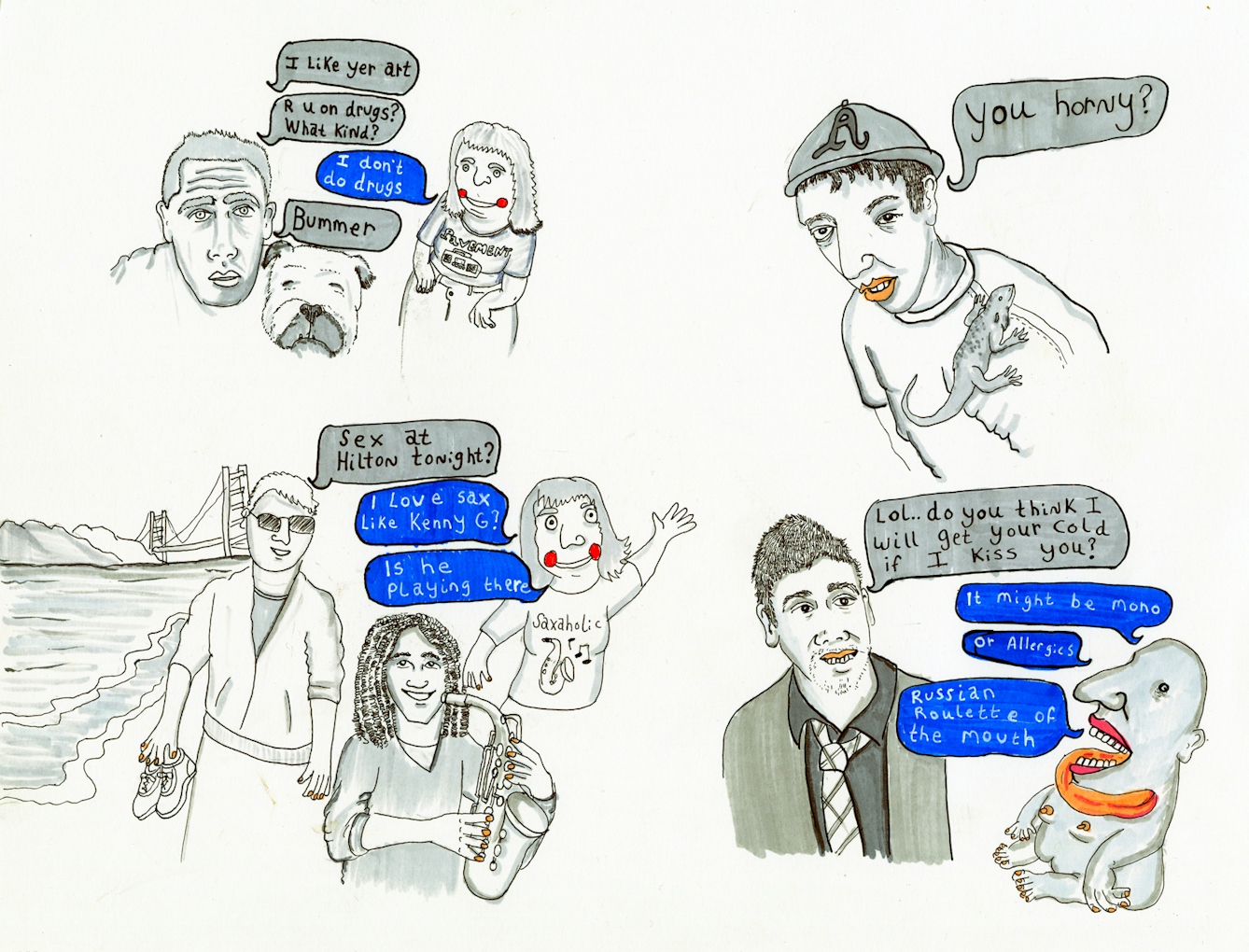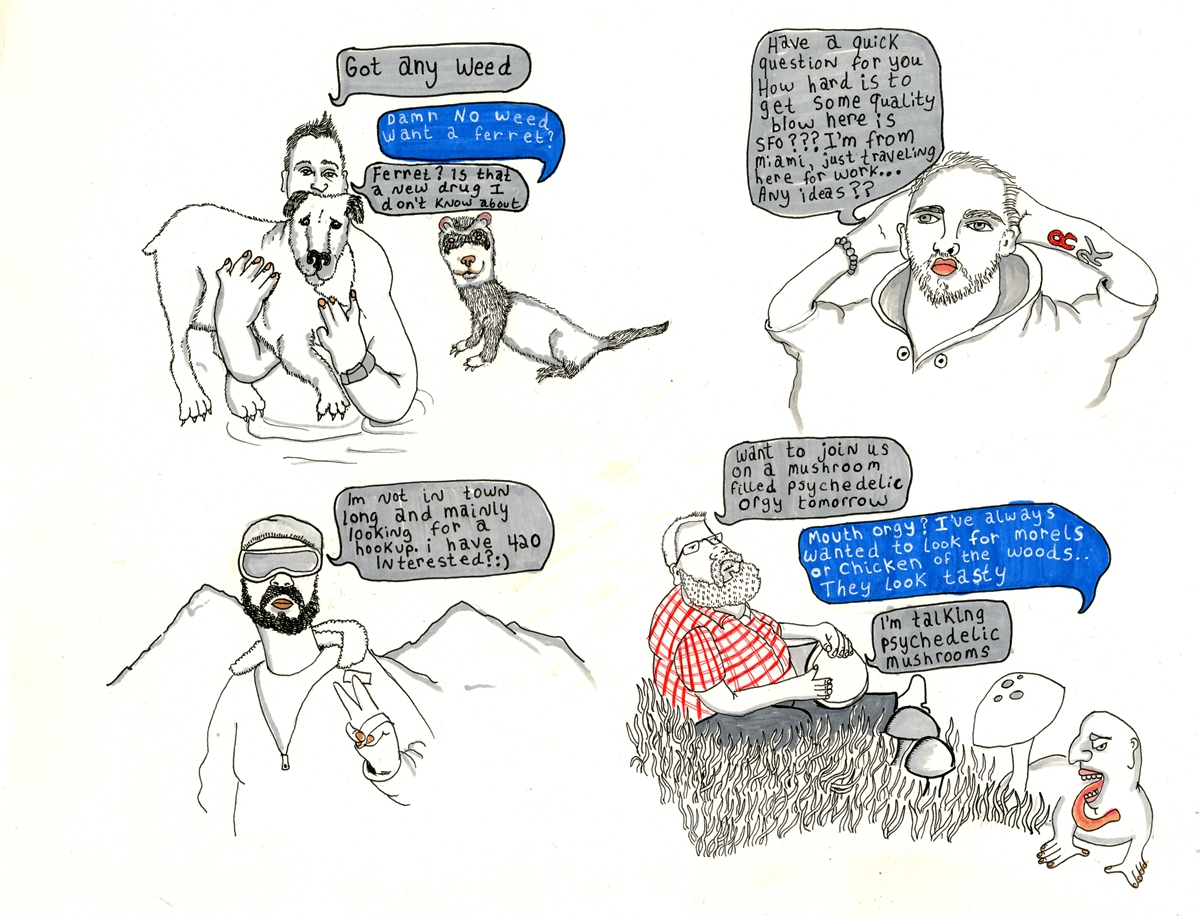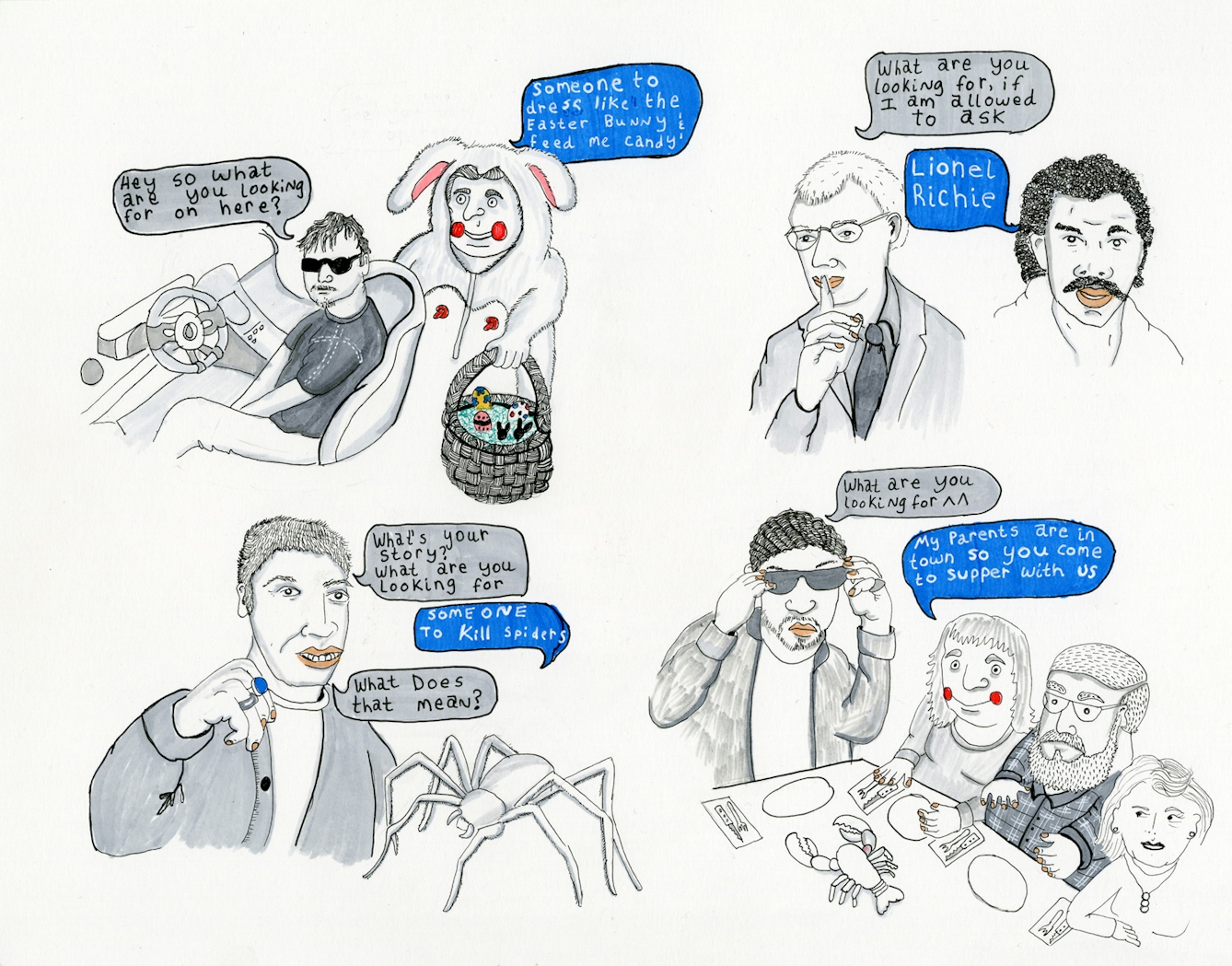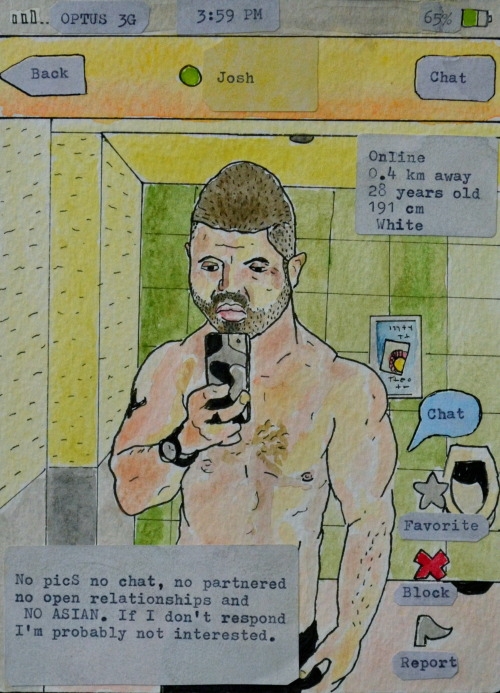The rules of online dating are endless – reply within 24 hours, be genuine, don’t take it too personally – but that doesn’t mean everyone sticks to them. Artists are pushing the boundaries of online dating behaviour, but how far should they go?
Note: this article contains links to external content about online dating that uses some explicit language and imagery.
Anyone who’s used an online dating platform or app will be aware that “don’t be a creep” is a frequently broken rule. As soon as people start interacting through the relative distance – and anonymity – of the Internet, the norms of polite behaviour seem to be abandoned. Psychologists call this the ‘online disinhibition effect’.
Taking on these these rule breakers, Instagram accounts such as ‘Tinder Nightmares’ and ‘Bye Felipe’ publish conversations that turn the tables, with witty rejoinders and deadpan observations, playfully re-contextualising creepy come-ons as comic exchanges.
Taking this a step further is Audrey Jones, an artist based in the San Francisco Bay Area – home to Silicon Valley and, seemingly, plenty of online creeps. Her ‘Tinder Diaries’ illustrate a collection of comments and conversations from online suitors, transforming the relationship between her and them, and empowering her as author of the imagery.
In pictures

Audrey Jones’ artworks illustrate a collection of comments she received, and conversations she had, on Tinder.

On her website, Audrey explains that she started “exploring the avenues of online courtship after certain family members were overly concerned with my relationship status and why I never talked about my dating history”.

She said yes to as many people as possible on the dating app to increase her chances of a “possible love connection”.

Her ‘Tinder Diaries’ collect together some of the conversations she had with online suitors.

The artworks transform the power relationships at play, and empower her as author of the imagery.
When scrolling or swiping through dating platforms, there’s not much to go on and decisions are made primarily on looks, so, unsurprisingly, profile photos have become a focus of advice and guidelines. A quick search on Google will deliver plenty: don’t look directly at the camera, smile, don’t use a selfie, don’t pose with a baby but do pose with a pet (but not a tiger, which many people have inexplicably decided is a good idea).
Artist Matt Starr has found an alternative approach to profile pics. Using Photoshop and a surreal imagination, his changing roster of unconventional self-portraits have garnered him far more attention than any number of exotic animals. Rather than posing with puppies, he’s redefined Tinder as an artistic showcase and promotional platform.
More broadly, profile pictures seem to be a favourite source for artists seeking inspiration, with numerous recreations in acrylic and watercolour. But can a creative challenge go too far in breaking the rules? What about the people whose images are repurposed? Even if they were rude on Tinder, do they still have a right to privacy?
Jiyeon Kim’s ‘Tinder Project’ deals directly with this question, creating portraits of unknowing Tinder users to explore the tensions between personal feeling, copyright law and artistic freedom.
In pictures

Media artist Matt Starr’s surreal Tinder profile pictures garner him more attention than conventional ones would. In an interview with ‘Paper’ he said that “virality is 100 per cent a part” of his work.

With his ‘Tinder Project’, artist Jiyeon Kim asks: “How do you feel when you find your Tinder profile in somewhere that you didn’t expect? Is this exhibit a violation of privacy or just an artwork we can understand?”

In a visual essay on her website, artist Phoebe Boswell describes how she turned to Tinder as a way of examining segregation and othering during a month-long residency in Gothenburg. “Seriously, what better way to connect with a broad spectrum of people, and to get a sense of how a city views you and relates to you than a superficial hook-up site.”

From her studio in the white, affluent centre of the city, Boswell uploaded profile pictures, made a small radius around her studio, and started to swipe right. She would spend hours drawing small intimate portraits of the men she swiped. As conversations began, she would document these too.

Artist Adam Seymour creates watercolour and ink works based on Grindr profiles. In an interview with ‘The Huffington Post’, Seymour explained: “I’ve had some negative reactions from people who have been made to feel uncomfortable by seeing their profile in a second context. However, I believe, as my interpretations are highly stylized, that I have been respectful to the privacy of my subjects.”

This intimate watercolour by Ted Sterchi is part of his ‘Grindr Illustrated’ series. In an interview with ‘Vice’ he explained: “I’m taking these sexually charged images and painting them from a kind of lighthearted approach. I wouldn’t say it neuters the images, but I think it makes the overly sexy images a bit more friendly.”
In 2014, the Dutch artist Dries Verhoeven created a public art installation in Berlin’s trendy Kreuzberg district. Sitting inside a glass box at the intersection of two busy roads, Verhoeven engaged members of the public in conversation on the gay-oriented platform Grindr, with his conversations projected live onto a large screen.
Verhoeven says he wanted to challenge whether it’s still relevant to distinguish between private and public space when people are putting so much online, but the users he interacted with were pretty clear that they expected privacy on the platform.
Following a deluge of complaints, a viral Facebook post from a non-consenting participant – who described the experience as “digital rape” – and intervention from Grindr itself, the installation was closed down after only five days. Accusing Verhoeven of violating their privacy and safety, users pointed out that anonymity on Grindr is important to protect people who don’t want to disclose their sexuality publicly.
Other artists using dating profile images as source material haven’t faced the same backlash, but in Germany there is a strong expectation of online privacy, and, in general, gay people may have more to fear from their identity being publicly shown.
It seems that the rules of online dating can change depending on context, with different people having different expectations of how to behave – maybe Audrey Jones’ suitors really do expect their pick-up lines to work. But that doesn’t mean we have to accept dating creeps. We are all authors of the rules of online dating, and it’s up to us to decide what we write.
About the contributors
Alex Green
Alex is a writer, consultant and occasional artist. He is currently researching a doctorate in digital culture at the Web Science Institute, University of Southampton.

